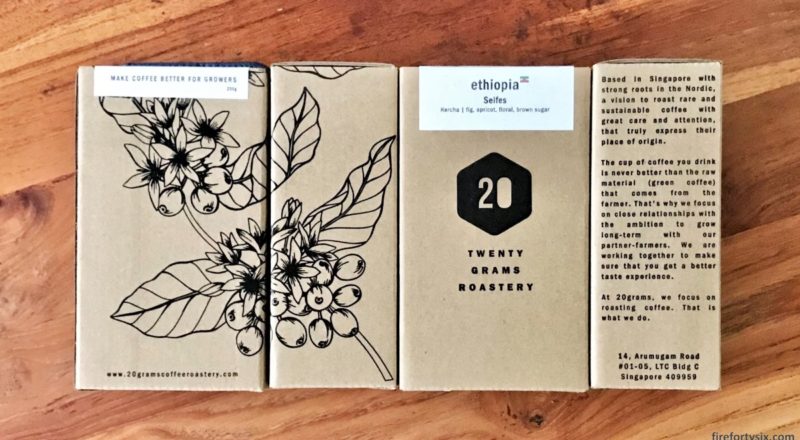Ever since I started taking my pour over coffee seriously, I’ve been buying mostly medium-roasted beans. They have resulted in many delicious cups of coffee, making our morning routine that much more enjoyable.
But the deeper I go down the rabbit hole, the more I read about the wonders of light roasts. About how bright and fruity a well-made cup can be, about how clean the flavours come across, and perhaps most importantly, about how much more caffeine they contain.
This particular style of roasting seems to have been perfected by roasters in the Nordics, and I was toying with the idea of signing up to a KaffeBox subscription. At NOK 339 (~SGD 48) for 2 bags of 250gm inclusive of international shipping, the price was surprisingly reasonable.
Given the high quality of beans I’ve gotten from many different Singaporean roasters, I did a bit more digging and discovered 20grams Coffee Roastery, a local shop that specialises in Nordic-style light roasts.
Since this was going to be a totally new frontier, I wanted to explore as broadly as possible. My online order of 1.25kg of beans covered a wide range of country origins, processing methods and coffee varietals.
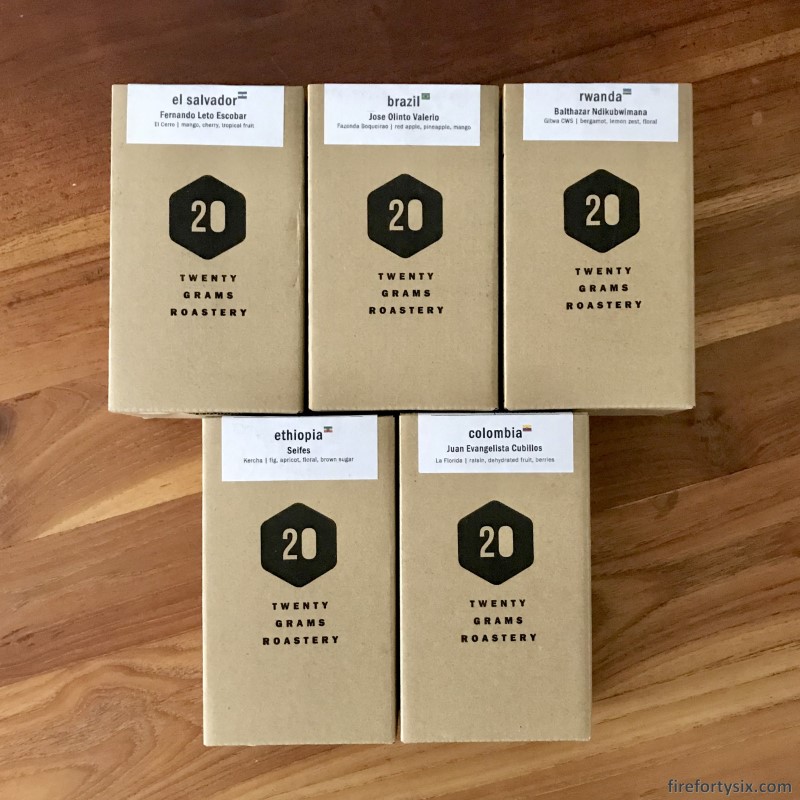
| Country | Region | Processing | Varietal |
|---|---|---|---|
| El Salvador | Apaneca Llamatepec | Dry Fermentation | Pacamara |
| Brazil | Jesuania Minas Gerias | Natural | Catucai 2L |
| Colombia | Huila | Washed | SL28 |
| Ethiopia | Oromia | Natural | Heirloom |
| Rwanda | Nyamasheke | Washed | Red Bourbon |
Less than an hour after I clicked confirm (45 minutes to be exact), my doorbell rang. The Wife was expecting some deliveries from her regular online shops, so I was totally blindsided when I opened the door.
It was a man holding a 20grams Coffee Roastery bag. I looked at him in puzzlement for more than a few seconds, trying to process what was happening.
My usual coffee bean orders typically take a few days to reach, so my brain struggled to understand how this particular one could arrive in less than an hour.
The delivery guy looked at me in amusement as I blurted out: “But I only just placed the order!” It turns out that he was just on his way out when my order arrived, and he was able to deliver my beans immediately.
Brewing Light Roasts
After I managed to regain my composure somewhat, he asked if this was my first experience with light roasts. And when I replied that it was, he proceeded to share some pointers on how to brew them properly.
The main idea is to maintain a high thermal mass to maximise extraction. At the 20grams cafe, they use a Kalita with enlarged holes, hand-drilled themselves, for a slightly faster flow.
When I mentioned that I only have a V60, he suggested Lance Hedrick’s “flooding” recipe, where he uses a high and fast pouring technique. While I have heard of Hedrick by name, I haven’t tried any of his recipes. I made a mental note to hunt down this particular recipe on YouTube.
We had an enthusiastic and lengthy conversation about all things coffee, and he wished me all the best in my exploration. He ended off by asking me to message him if I had any questions whatsoever about their beans.
I have never met a delivery guy who was as passionate about their product as he was, and I soon found out why. Turns out we share the same first name, and his last name was Mok. A quick google search turned up this interview, and guess what, Alvin Mok is actually the owner of 20grams.
Vacuum Packaging
Almost all the beans that I’ve bought so far have come in resealable bags, fitted with one-way valves to allow carbon dioxide from the freshly roasted beans to escape as they rest. However, the beans from 20grams were all packed in vacuum-sealed bags.
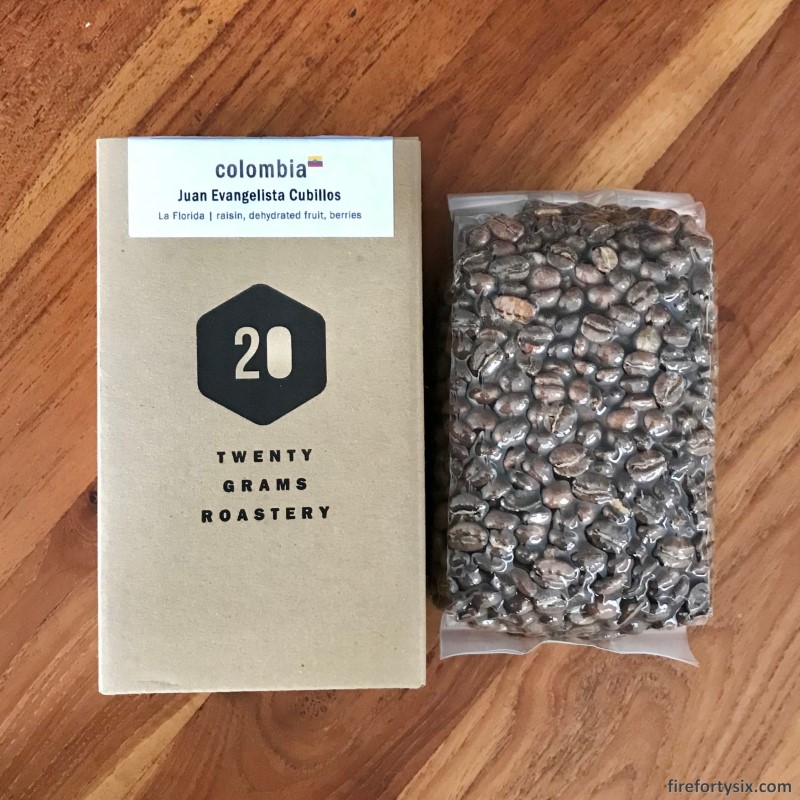
I guess the nature of light roasts is that they don’t emit any gas, and vacuum sealing them becomes physically possible. The challenge for me then would be to find a suitable container as I opened each bag of beans.
After rummaging around our kitchen cabinets, it suddenly occurred to me that obvious solution was staring at me in the face all along. All I had to do was to wash and dry one of the used resealable coffee bags (duh!).
The ones by Homeground Coffee Roasters, another local coffee company, were ideal for this purpose. There’s no mistaking what they contain, and the minimalist design appealed to my senses.
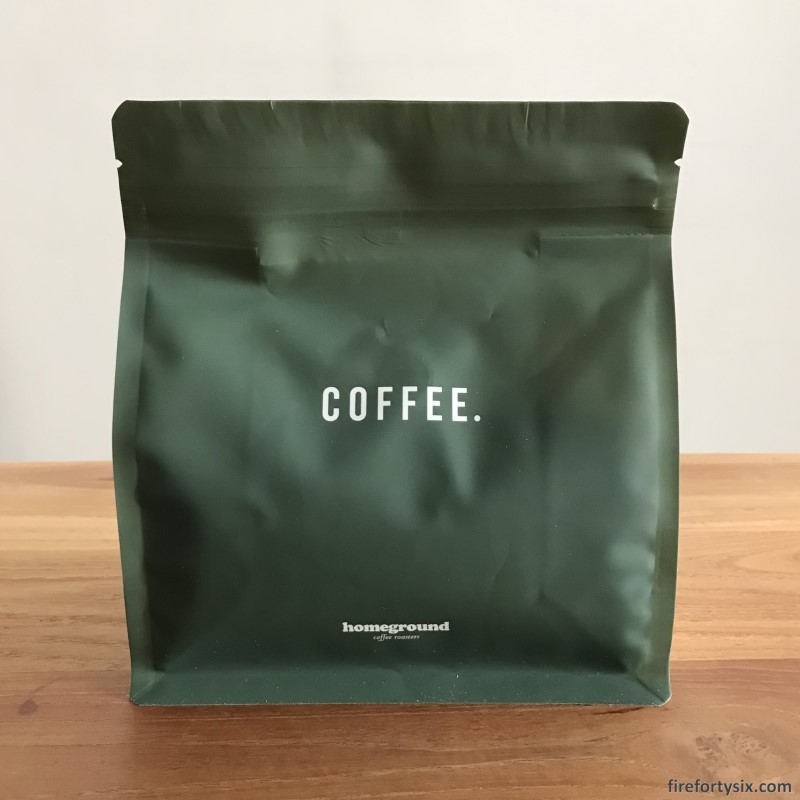

They don’t print the specifics of each coffee on the bag itself, opting instead for an information card that’s slotted into a pouch in front. This was perfect for me, as I could simply cut out the coffee details from the 20grams box and replace the Homeground card.
Now that I had the storage situation sorted, it was time to start brewing some beans! After making sure that they were sufficiently rested i.e. more than three weeks after roast date.
The first thing I noticed was that, true to their name, the beans were indeed lighter in colour. The aroma was also more gentle, and noticeably more fruity, when compared to my usual medium roasts. It still smelled like coffee, of course, just a bit more delicate.


El Salvador – Fernando Leto Escobar
Each bag had been roasted on different days, and I used the roast date to decide the brewing sequence. First up was the El Salvador with the earliest roast date, featuring tasting notes of mango, cherry and tropical fruit.

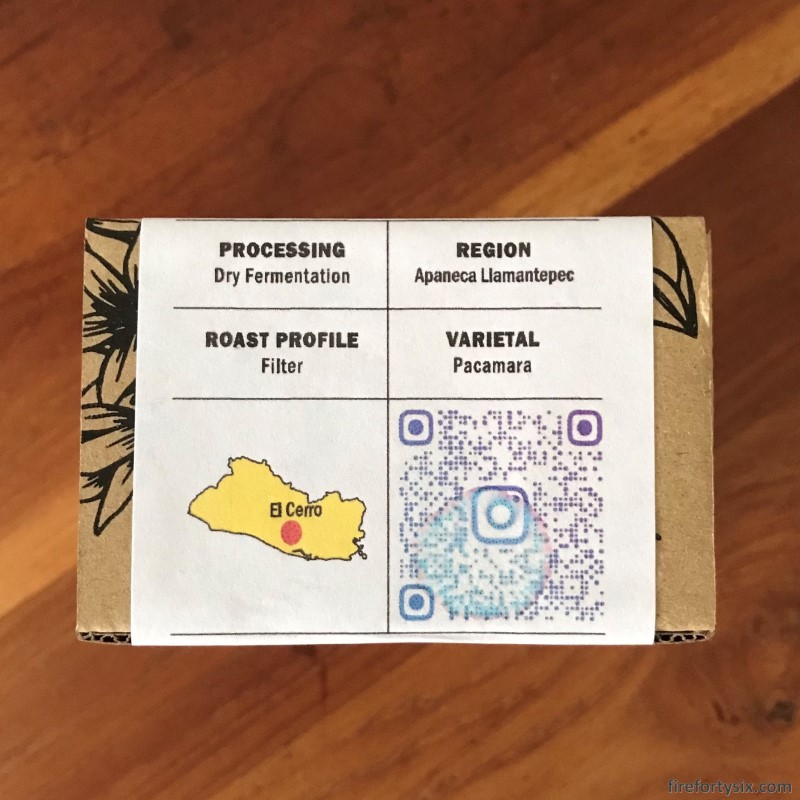
Despite earlier advice to brew using Lance Hedrick’s technique, I wanted to see if my usual Tetsu 4-6 recipe would be able to yield a decent tasting cup:
- Coffee: 25gm
- Water: 400gm (1:16 ratio)
- Grind Size: 3-6-0 (1Zpresso JX-Pro)
- Water Temp: 94°C
- Bloom: 75gm (3x coffee)
- Brew Time: 3’10”
Unfortunately, it didn’t.
The brew was very acidic, and didn’t feel like it would improve with a finer grind. After letting the taste settle in my mouth for a while, I could faintly discern a pleasant fruity aftertaste. It definitely had potential, but I’d have to try a different recipe.
Lance Hedrick 1-2-1 V60 Recipe
It was time to consult YouTube, and I managed to find the recipe that Alvin referenced. I have to say that Lance is quite entertaining to watch, like a cross between Dustin from Stranger Things and a less frenetic Jack Black.
My first impression after watching the entire 15 minute video was that this technique was too busy. There’s divoting, splashing, agitation and swirling involved; basically too many moving parts to my liking. But the concept did make sense, in terms of maximising extraction and pushing out fines.
I started out with the suggested medium fine grind (3-4-0 on my 1Zpresso JX-Pro), Lance’s preferred 1:17 ratio (i.e. 25gm coffee to 425gm water) and tried my best to replicate what I saw in his video. Total brew time came up to 4’30”, mostly due to the really long 2 minute bloom.
Compared to the Tetsu 4-6, it was more balanced and less acidic, but the body was just too light. In my next attempt, I brought the ratio down to 1:16 (i.e. 25gm coffee to 400gm water) but still couldn’t shake off the light body.
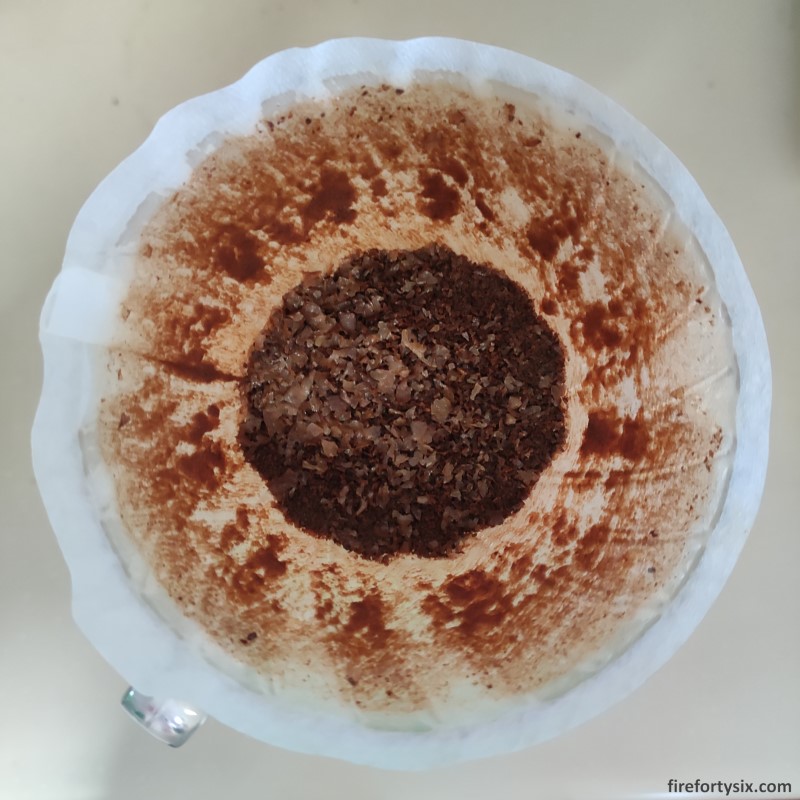
In a past comparison between paper and metal filters, I found that the latter allowed more coffee oils to pass through, effectively amping up the body of the final cup. Keeping the earlier brewing parameters the same, I swapped out my Cafec Abaca and replaced it with my Able Kone.
While the body became noticeably more robust, the flavour went completely haywire. It tasted really strange, and not in a good way. Looks like metal filters don’t play well with light roasts.
Here are my brewing parameters for the Hedrick 1-2-1 , even though it didn’t quite work out for me:
- Coffee: 25gm
- Water: 400gm (1:16 ratio)
- Grind Size: 3-4-0 (1Zpresso JX-Pro)
- Water Temp: 99°C
- Bloom: 75gm (3x coffee) for 2 minutes
- Brew Time: 4’30”
Onyx Coffee Lab (Elika Liftee) V60 Recipe
All was not lost though, because there were other recipes that I could pull out from my toolbox.
Based on the same principle of maximising extraction using near-boiling water, grinding to medium fine and maintaining a high thermal mass, I could try either Hoffmann or Onyx. And between the two, I found Onyx to be the superior option for our tastes.
A step-by-step 8 minute video demonstration by Elika Liftee from Onyx is given below. But if you’re interested to read about it instead, including my comparison between different recipes, here’s the link to my previous post.
Here are the specific brewing parameters that I used for the Onyx:
- Coffee: 25gm
- Water: 417gm (1:16.7 ratio)
- Grind Size: 3-4-0 (1Zpresso JX-Pro)
- Water Temp: 99°C
- Bloom: 83gm (3.3x coffee) for 45 seconds
- Brew Time: 2’20”
The results were much better than either Tetsu 4-6 or Hedrick 1-2-1. Even though the body was still on the lighter side, there was much better balance with prominent fruity notes and a pleasant aftertaste.
It took several attempts using three different techniques, but I finally found a recipe that would allow me to best appreciate what Nordic-style light roasts had to offer.
Brazil – Jose Olinto Valerio

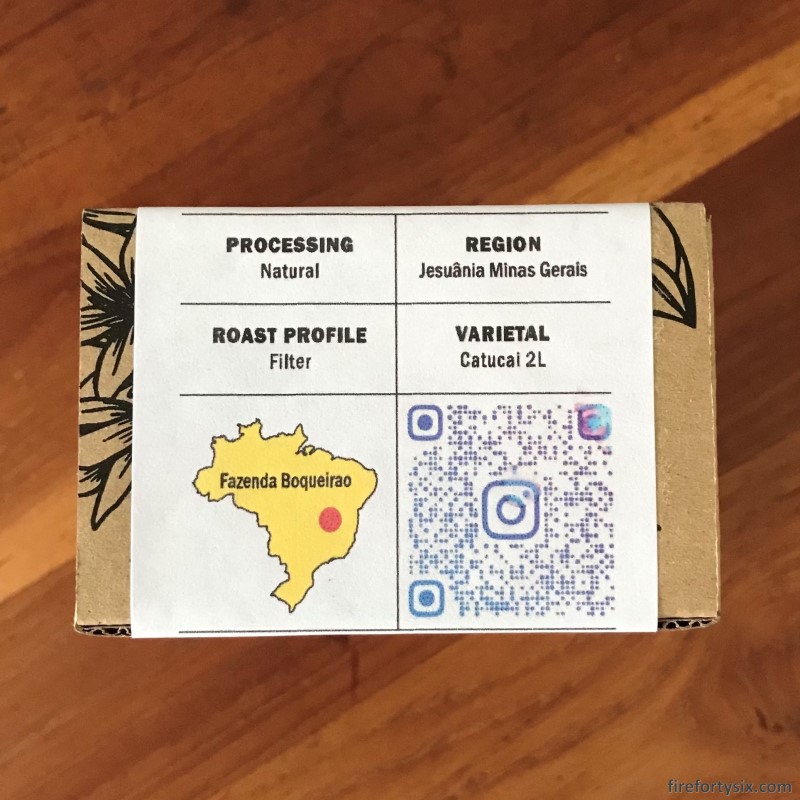
Staying on the South American continent, the second bag I opened was from Brazil. Like the earlier beans from El Salvador, these were also supposed to be quite fruity, with notes of red apple, pineapple and mango.
I’ve not brewed many beans from Brazil, which is ironic since they are the world’s largest producer of coffee, and have been for the longest time. The ones I’ve tried have generally been roasted fairly dark, and tend to feature more chocolatey notes.

Using the exact same Onyx recipe and brewing parameters from before, I ended up with another bright, juicy and tasty cup. It was nowhere close to the Brazilian coffee I’ve had before, and was even nicer than the El Salvador.
Luckily I had already sorted out the recipe and dialed in the grind size, allowing me to fully enjoy this delicious pour over coffee right from the very first brew.
Colombia – Juan Evangelista Cubillos
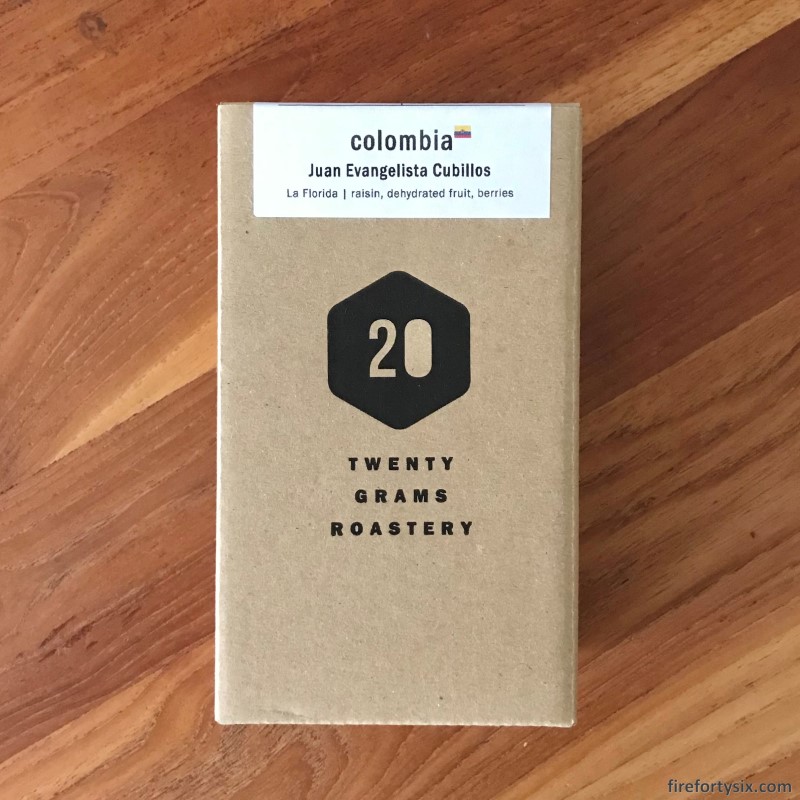
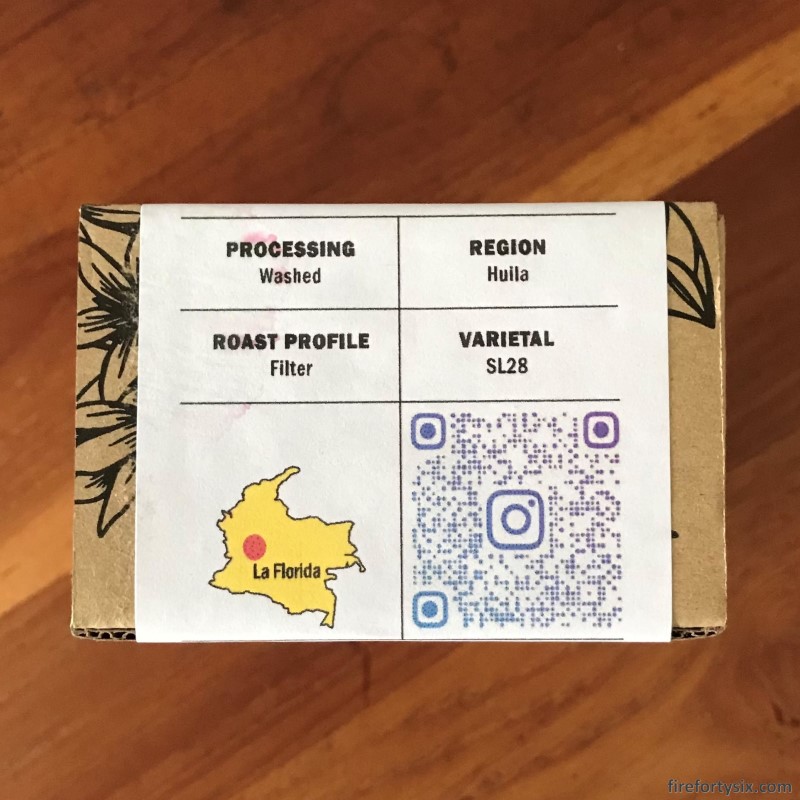
The next bag was from Colombia, and was the final bag before moving on to the African continent. Raisin, dehydrated fruit and berries were on the tasting notes, and while I didn’t get any hint of raisins, it was definitely fruity.
It felt a bit more acidic than the Brazil though, which could have been due to the difference in processing – washed for this Colombian, and natural for the previous Brazilian. Or maybe it was due to the difference in coffee varietal, or a bit of both.
Either way, it was another totally enjoyable coffee, and paired very nicely with a Korean hallabong Swiss roll that we bought from Paris Baguette. The flavour profile of light roasts makes it a great accompaniment to cakes and other sweets, possibly even better than tea.
Ethiopia – Seifes
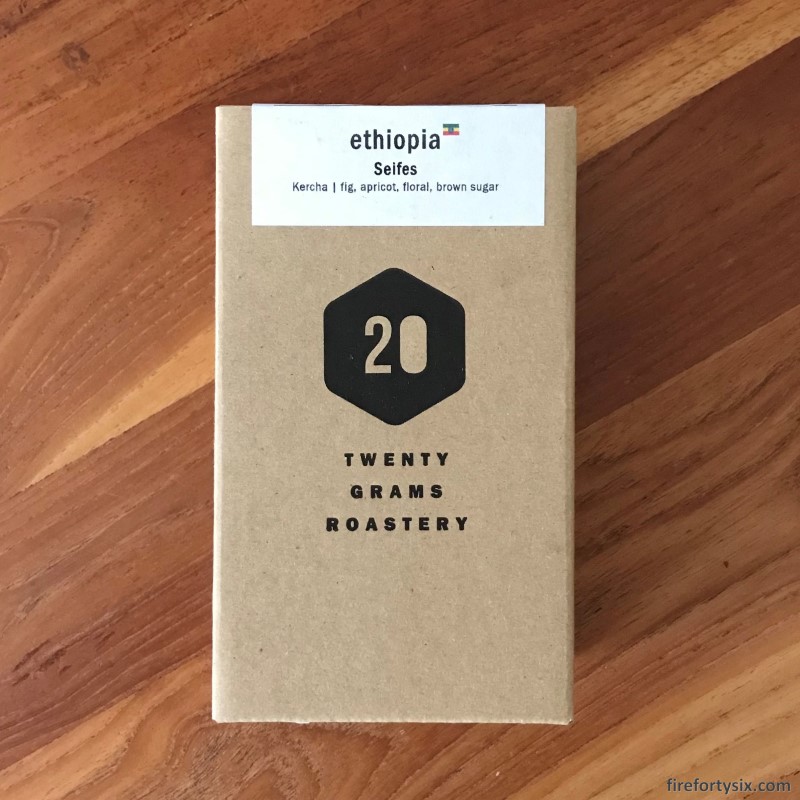
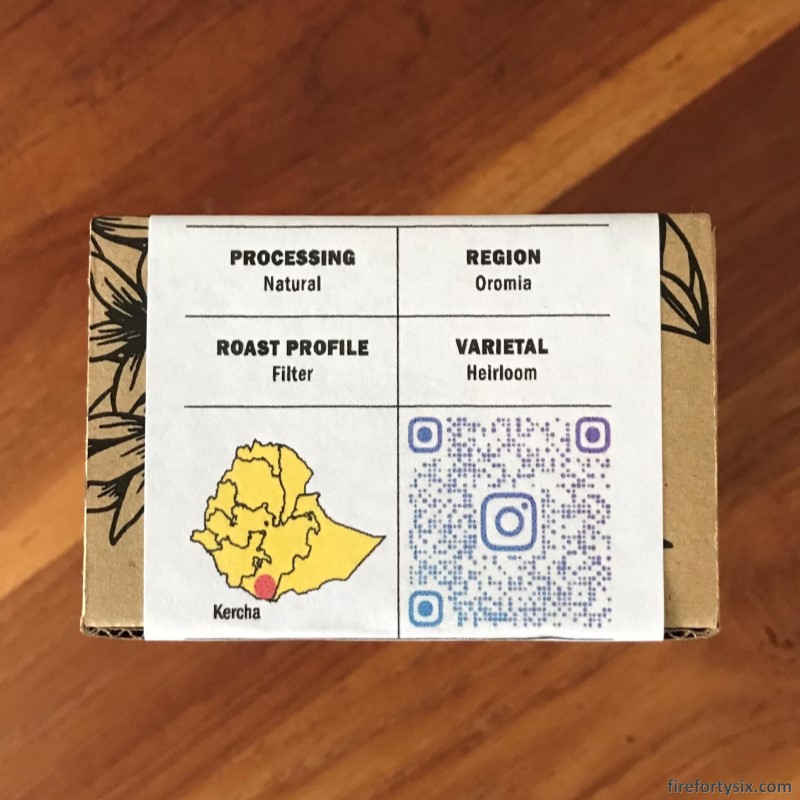
If you’ve been following the coffee posts from my blog, you’ll know that our favourite beans so far have overwhelming been naturally-processed Ethiopians. So, it shouldn’t come as a surprise that I was most looking forward to opening this bag.
Actually, I was tempted to brew this first, but it was good that I waited until I sorted out my recipe, and had sampled other light roasts for a meaningful comparison.
It did not disappoint, and was hands-down the best of the four beans I had so far. The Wife also concurred. In addition to fruit, there were also floral notes seeping in, making it a bright but delicate cup.
I wanted to see if I could squeeze out more flavour from the beans, and ground them finer by eight clicks on the grinder (i.e. 3-2-0 vs 3-4-0). While it resulted in a stronger body, the brightness and fruitiness were muted.
The original grind setting was quickly restored and we had wonderful coffee for the rest of the week. I wanted to get more bags of this bean, but alas, it was already sold out. In fact, when I checked, all their Ethiopian beans were gone. Sad.
Rwanda – Balthazar Ndikubwimana
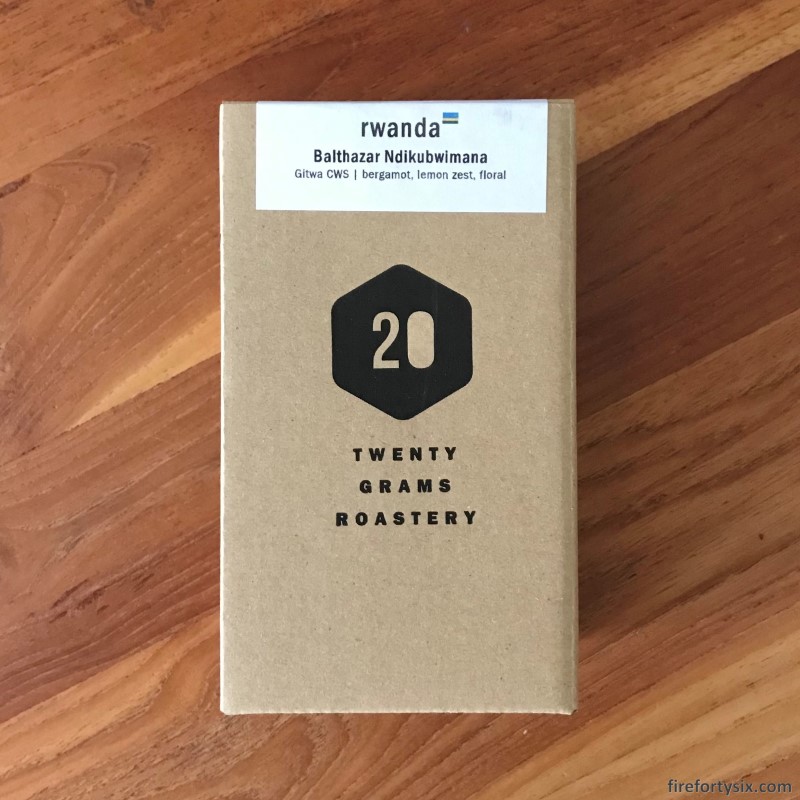

Finally, the end of my journey was near and I opened the very last bag from Rwanda. I was hoping to end on a high note, especially after the fantastic Ethiopian. But unfortunately, that proved to be elusive.
Using the same Onyx brewing parameters, the first cup was woody and citrusy, but quite astringent. I tried grinding coarser to shake the bitterness, but that resulted in less flavour. Switching to Tetsu 4-6 also didn’t help.
I went back to the original Onyx, using a metal filter instead of paper, but that didn’t quite work either. It did, however, produce a slightly better tasting cup so I decided to just stick with it for the rest of the beans.
Concluding Thoughts
Well, I guess you can’t win them all, and four out of five is a pretty good result. Good enough for me to declare that I’m officially now a fan of Nordic-style light roasts.
Over the six weeks or so, when I was drinking pour overs made from light roasts, I felt more alert in the morning. It could have been due to the supposedly higher caffeine content. Or it could simply have been a placebo effect.
It doesn’t mean that I’ll be switching over completely from my usual medium roasts though. But it does mean that I’ll start looking out for light roasts, especially naturally-processed ones from Brazil or Ethiopia.
A visit to 20grams Coffee Roastery is also on the cards. To say hello to Alvin and try a cup, or two, or maybe even three! It’ll give me a chance to see how it’s done by the man himself, and benchmark my brewing technique against an actual professional.
